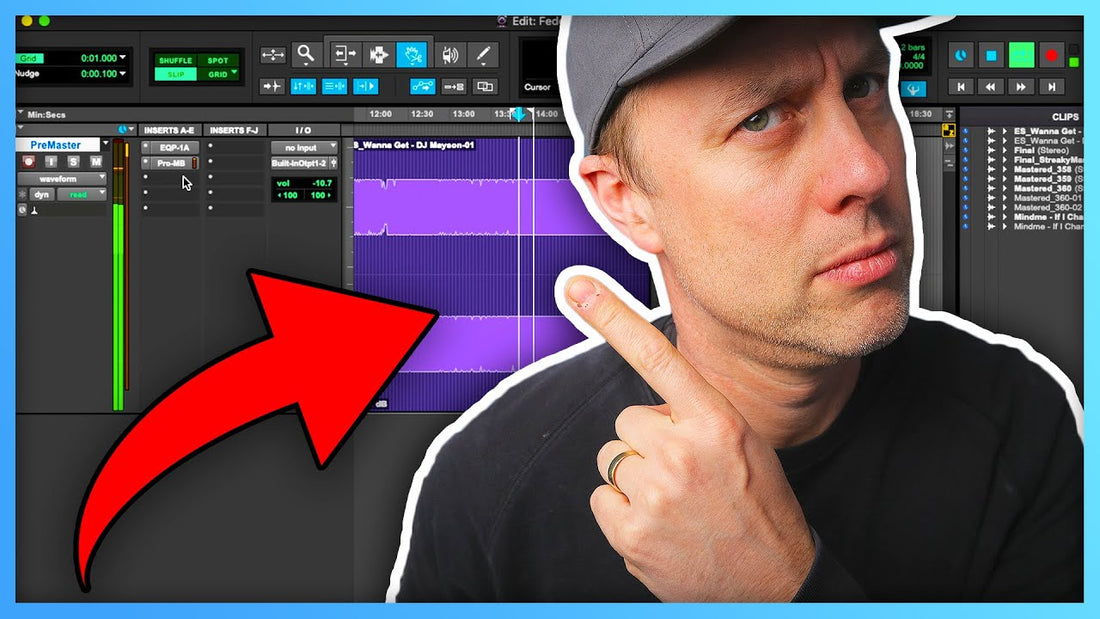
DON'T MISS THIS STEP! | IZotope RX workflow
Share
VIDEO TRANSCRIPTION
So before I start mastering, what I tend to do is open a track in RX. Now let's do that and I'll show you exactly what I'm looking for and why I do this. I'll open the track in RX. And so what I do, I want to see is it limited. I'm just basically gaining a bit of information on the track before I just start piling in. So I'll put it into this mode so that I can see. Sometimes there's some lines across the top or things in the high register that you can't necessarily hear that well, but you can see on here. So it's really handy just to be able to flick through, see what's happening with that. Also, if there's any anomalies in the sound, you can usually see harshness around there.
So check to see if there's any clicks and pops, so I'll do it visually, first of all. So I'll go through, see what's going on. Can't see anything you will see like really high clicks and you'll see any weirdness. This looks quite good. Doesn't look over compressed as in limited, because this would be just a straight flat file. So that's good. Now, I go into the waveform stats so I can see exactly what's happening with the waveform. So I look at the RMS levels. I can see that the lufs is about 18, so that's all good. That's good news. Now, this track is I want to make sure what the sample rate frequency. Now this is 2448. Now I like to run my room at 48K. The reason for that being is that my processing and my computer works much better.
I get better sound for that. The clock and everything that I used for my outboard equipment, sounds best when it's all running at that. I do like 96 for some projects, but I tend to use 48 a lot of the time. So what I'll do is if this is in 44, I'll go into resample and RX has a really good algorithm for doing sample rate conversion. So I'll change the sample rate in here, and then bounce it out as that. But what I'm doing also is I'll have a listen through. So my first listen, before I put it into Pro Tools, because that's what I use for mastering. If you are using WaveLab or something like that, then that's fine. But I just listen to it in RX one time through so I can hear, okay, here it is without me thinking about anything like plugins without getting going, and starting to dive into the equipment, I can't do that.
I'm not able to in RX. So that means I can just listen to the track and just listen to how it's sounding before anything's been put on a tool. And also I can hear for any clicks pops, I can hear if it's bright so I can start making judgments on the track before I've even put it into the system. Because you tend to find that you will hard not start fixing things that you hear. So, I don't wanna do that now. I just wanna listen to it. I just wanna see what the track's about. See how it sounds at different sample rates or take any clicks out. And remove any of those noises at the top that I said that you might not be able to hear. There's you might be some harm. There might be some hiss. So I'm just listening through, make sure it all sounds great. And get an idea really for what we're dealing with. (Music playing)
So with this track, it all sounds pretty good. The levels are good. There's no weirdness going on. This is a great track to get cracking straight in with. I've already made some decisions on what I want to do. I don't really need to change the balance too much. So I think that I can just add some nice compression, some really juicy EQ and this will really come out a treat. So that is what I do every single time before I master. It goes into RX. I do all those things and then I start mastering when I put it into Pro Tools.




